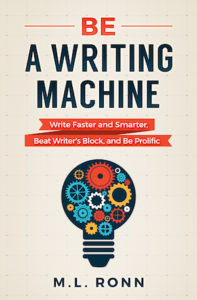0 words today but I had an important reason for it.
For reading, I finished IDW’s TMNT, Vol. 7.
For data analysis, I’ll cover that in a minute.
For marketing and production, no work today.
DICTATION DATA ANALYSIS AHEAD. YOU’VE BEEN WARNED
Okay, here’s why I had zero words today. First, I was planning the next Beast Mode book—which I have determined the right direction and market fit. I will outline it tonight and tomorrow, likely with an evening start tomorrow.
I also received Year of the Rat back from my editor.
I have been dying to know how my new voice recorder writing method will convert into editing results. In other words, if I have the capability of writing 6,000-8,000 words per day every day moving forward, how clean will those words when I send them to the editor? How many errors will she find?
The initial results are outstanding.
The book is 80K long and my editor found 364 issues.
That means that she found 1 edit per 220 words (roughly one per page).
(To do this calculation, take your word count and divide it by the number of edits you receive. 80,000 / 364 = 220. If you’re wondering how to count the number of edits you receive, check out my book Advanced Author Editing. https://www.authorlevelup.com/editing).
Anyway, these numbers indicate that my manuscript was very, very clean, and on par with my other novels that were typed (those were around 1 edit per 250 words on average).
As I was digging through the edits, I had a revelation. I asked the question, “How many of my editor’s edits were critical?” In other words, how many issues would have pulled the reader from the story? That’s the real number you want to know; it consists of typos, story errors, and other things that you do NOT want readers to see.
Not every issue your editor finds is critical. Sometimes they flag things you don’t agree with, or that an average reader would never notice. Most commas (or lack thereof), for example, won’t catch readers’ attention unless you are violating a hard and fast grammatical rule, of which there are only a few. Oftentimes, comma usage is a matter of preference rather than a strict set of rules.
For my book, the number of “critical” edits my editor found was around 120 (33%).
If I do the same math, but with the critical edits only, I could actually argue that my editor found 1 edit per 666 words. That’s one edit roughly every 2.7 pages.
(80,000 / 120 critical edits = 1 edit per 666 words).
Again, these are outstanding results.
But here’s the most important number….
As I mentioned, my “edits per” was slightly lower than usual at 220 (versus 250). That’s around a 12% difference. This means that voice recorder dictation contributed to around 12% more errors.
Remember, I dictate using special commands and macros that help me clean up the text and potential errors as I dictate. My 12% is considerably lower than what most people are probably getting. I’m an outlier.
Is it worth it for the 12% “surcharge” of additional errors? Yes, 100%, especially since:
* My manuscripts are already quite clean
* Even with the 12% surcharge, my manuscripts are still cleaner than they were BEFORE I began using these advanced tools. As a reference, I was averaging about 1 edit per 150 words before implementing my advanced methods. 1 edit per 220 is still almost a 50% improvement.
* I’m still hiring a copyeditor and proofreader, so at the end of the day, when it’s all said and done, no one should know the difference.
That said, there is a downside to all of this, and that’s the type of errors that come with dictation and transcription.
When you dictate, you introduce the possibility of unique errors, most of which are endemic to the dictation/transcription. The worst offenders are things like dropped articles, wrong articles (“and” instead of “in”) or homophones (“padded” instead of “patted”, “through” instead of “threw”). You would almost never have these problems if you typed your story, but they’re shockingly common in dictation.
Current proofreading tools don’t catch these errors either. Worse, your eyes gloss over them when you’re editing because the words are often so small and your brain thinks they’re there. (This is especially true of dropped articles. But the only good thing is that readers often miss them too.)
So, my biggest preoccupation at the moment is how I can cut that 12% difference into something more manageable, but it’s proving quite difficult. I think I can get the number somewhere around 9% or 10%. Beyond that, I believe I will have maxed out the capacity of Microsoft Word macros.
The next level after this is Natural Language Processing (artificial intelligence), which requires Python knowledge (which I don’t have).
Grammarly has one of the best NLP engines in the world, and if their programmers can’t catch some of these issues I mentioned, then there is no way in hell I will be able to. That means that I may be at the limit of what current technology can do. As technology improves, so will my editing results.
That’s actually a really cool place to be in. It’s the writing equivalent of climbing Mount Everest. That’s pretty dope.
In any case, it’s time to head on to the next thing. I will be making some small tweaks to my dictation process over time but it looks like they’re in a great spot right now.
Have a good night.
Words Written This Year: 363,800 / 850,000 Goal

